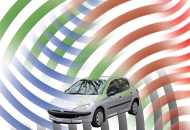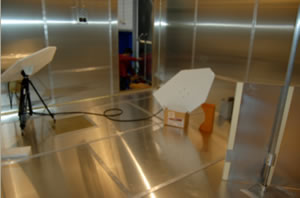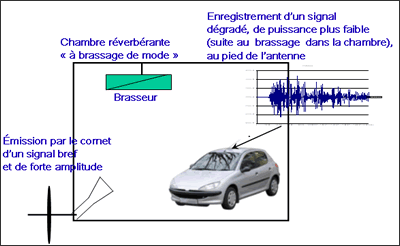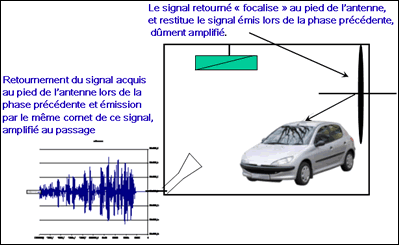To perfect electromagnetic compatibility tests, Onera researchers have adapted a technique developed over the last few years in acoustics, time reversal.
Number 37
 In an environment overloaded with electromagnetic waves, checking the electromagnetic compatibility of systems is a major issue. |
Traveling backwards through time... this inaccessible dream of going back to your youth is however not so absurd in physics. The so-called "time reversal" systems work on this principle. Today, researchers at Onera are using it to improve their testing systems in the electromagnetics field. |
|
With the increasing number of items of electronic equipment in civil and military equipment, checking the electromagnetic compatibility of the different systems is essential. For example, when a combat aircraft approaches its aircraft carrier, how can we be sure that the aircraft carrier's powerful radars will not interfere with the aircraft's electronic equipment, making the landing dangerous? In the civil field, cases have been reported of ABS braking systems that do not work near airports or airbags that go off on their own. Not forgetting lightning, which has direct impact on structures, and also indirect impact due to the strong electromagnetic fields that it induces. This is what motivates the activities of the Onera electromagnetic compatibility team.
But how does this time reversal technique work? It was first perfected for acoustic waves by the Mathias Fink's team at the École supérieure de physique et chimie industrielles (Graduate School of Industrial Physics and Chemistry). Here it has been adapted for electromagnetic waves. Firstly, a short pulse wave is sent into a chamber and reflects many times off the walls. In the center of the chamber there is a device for measuring the wave. We observe that it is degraded because of the reflections off the walls: the frequencies are out of phase; the signal lasts longer and the power is lower. This signal is then recorded and reproduced "backwards", like in old films on video cassettes when the film runs backwards during rewinding. Then, this reversed signal is returned to the reverberating chamber and there we get almost the original short pulse with an energy concentrated over a very short time. "Generally, reverberation is a handicap, but here, on the contrary, we use it to concentrate the signal".
Cécile Michaut, scientific reporter. |
|







